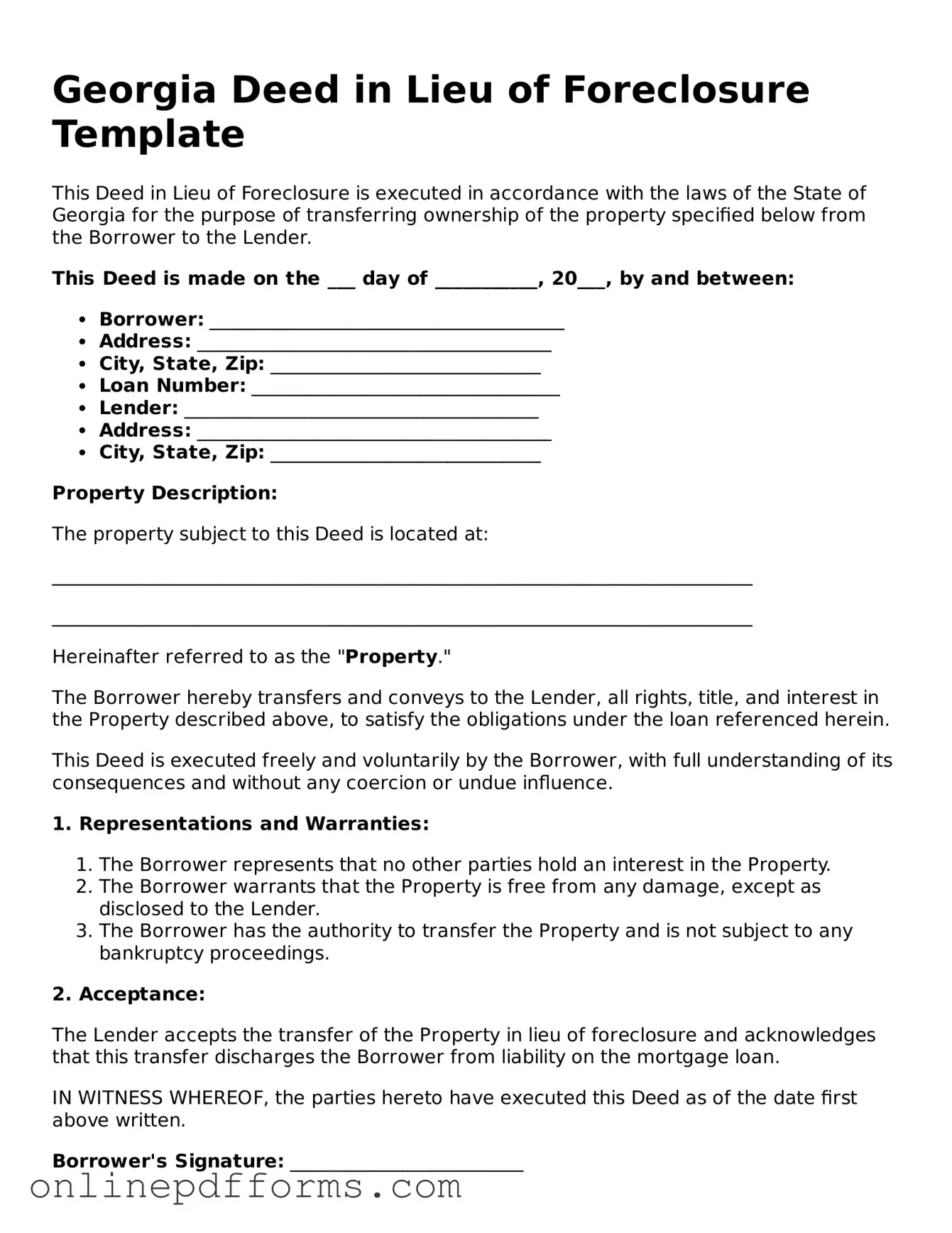Blank Georgia Deed in Lieu of Foreclosure Form
A Deed in Lieu of Foreclosure is a legal document that allows a homeowner to transfer ownership of their property to the lender to avoid the lengthy and costly foreclosure process. This arrangement can provide a smoother transition for both parties, helping the homeowner to mitigate financial distress while allowing the lender to take possession of the property more efficiently. If you're considering this option, take the first step by filling out the form below.
Open Deed in Lieu of Foreclosure Editor Now
